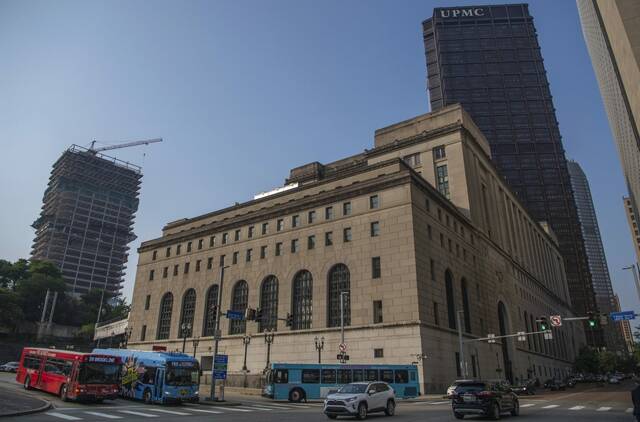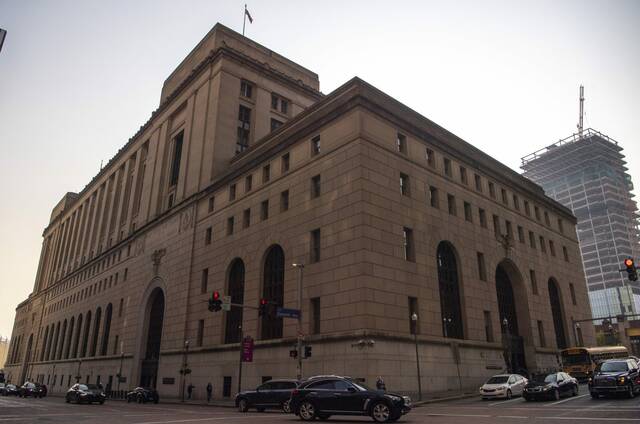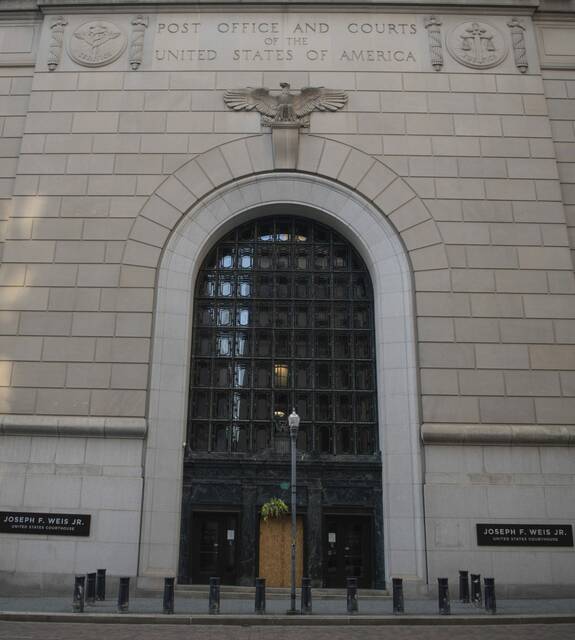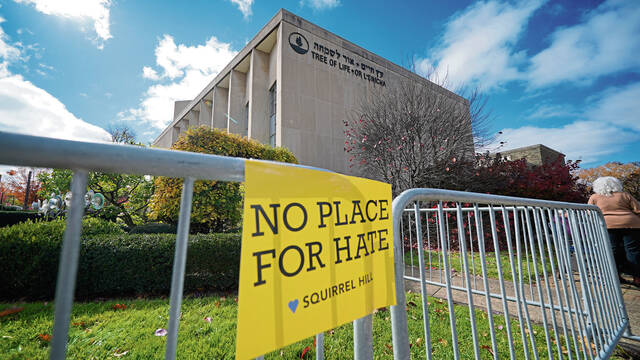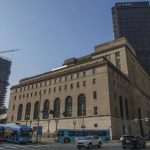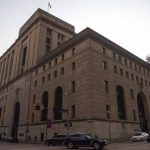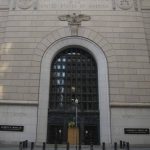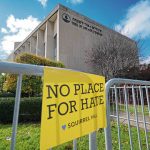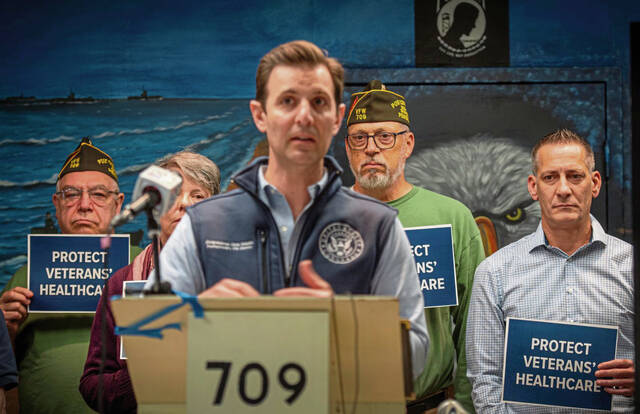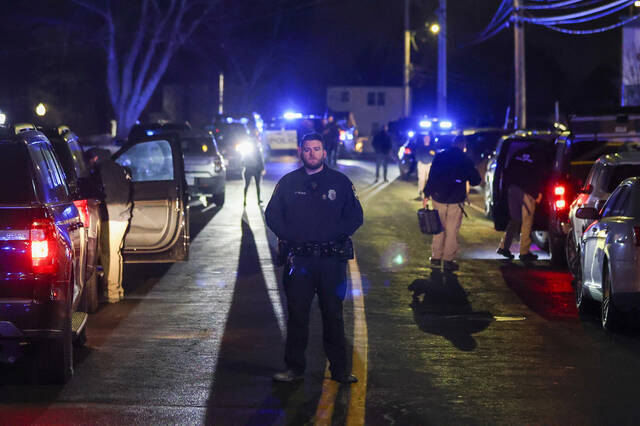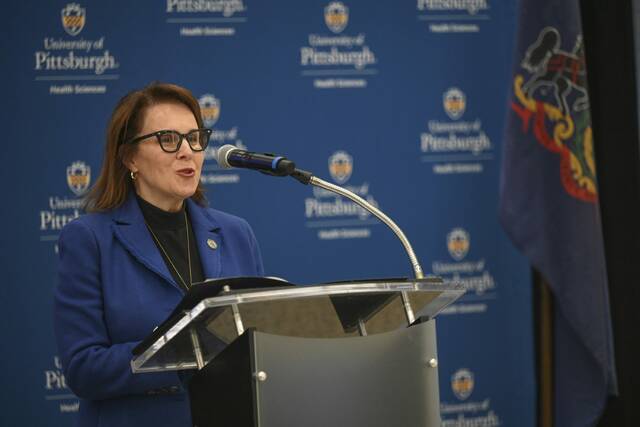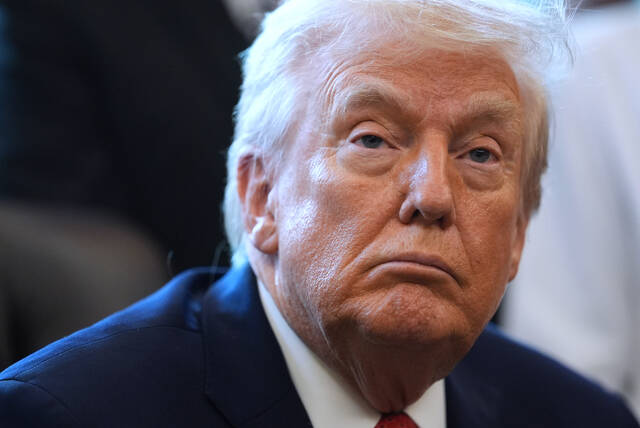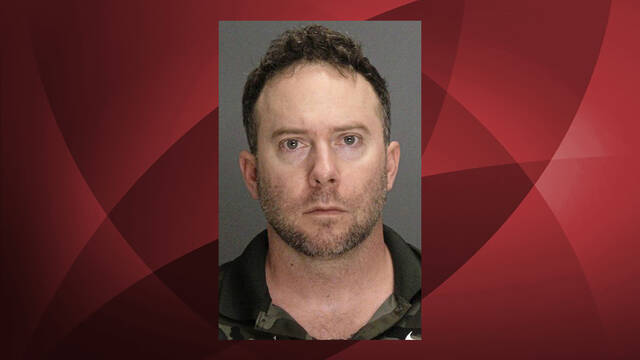The tourniquet wasn’t working.
In the minutes after Pittsburgh SWAT Officer Anthony Burke was shot through his right hand during a gunfight at the Tree of Life synagogue in Squirrel Hill, he moved to another upstairs classroom, and another team member placed the tourniquet around his arm.
“My hand was still bleeding,” Burke testified Thursday in federal court.
The bullet that struck him — fired from one of four guns the shooter carried that day — entered through the top of Burke’s dominant hand and blew out on the bottom.
Its path of travel fractured his ulna and exploded the small bones in his wrist.
In an attempt to control the bleeding, Burke pressed his knee against his wrist to put pressure on the wound.
It didn’t work.
“My arm was completely numb,” he testified. “It felt like 100 pounds. It was just throbbing in pain.”
By the time a second gun battle ended and police took Robert Bowers into custody, Burke had begun to feel woozy from blood loss.
Burke said his colleagues made a plan to evacuate him for medical treatment. Someone would throw a flash bang into the room where Bowers had been to ensure there were no more threats inside.
But, as they threw it, the device bounced back into the hallway at Burke’s feet. To avoid the detonation, Burke, a former high school physical education teacher, leaped down the set of stairs to the landing and then walked to safety.
Burke’s testimony Thursday wrapped up the second week of trial for Bowers, who is charged with 63 federal counts in connection with the Oct. 27, 2018, attack at the synagogue. It housed three congregations, Tree of Life-Or L’Simcha, Dor Hadash and New Light.
Bowers, 50, of Baldwin is accused of killing 11 people as they worshipped that morning, including Rose Mallinger, 97; Bernice Simon, 84, and her husband, Sylvan Simon, 86; brothers David Rosenthal, 54, and Cecil Rosenthal, 59; Dan Stein, 71; Dr. Jerry Rabinowitz, 66; Joyce Fienberg, 75; Melvin Wax, 87; Irving Younger, 69, and Richard Gottfried, 65.
The government is seeking the death penalty. The guilt phase of the trial, which began May 30, is expected to last three weeks, while the sentencing phase is expected to last six weeks.
Through two weeks, prosecutors have called 46 witnesses. Friday is a scheduled day off, and court will resume Monday.
Burke, who spent about 40 minutes on the stand, told the jury he joined the SWAT team because he felt like it was a calling — to be the “tip of the spear” and work with a team.
SWAT Officer Timothy Matson was Burke’s mentor when he joined the group. So, on the morning of the shooting, when he heard Matson screaming in pain after being shot, he knew he had to try to help.
Burke, who was standing on a set of stairs outside the classroom where gunfire erupted, first placed the muzzle of his rifle against the drywall, aiming where he believed the suspect was on the other side.
Burke said he engaged in “target-specific suppressive fire” through the wall and then peered through the doorway.
“Officer Matson was attempting to crawl out. I then reached — I tried to grab the strap, the ‘dead man’s strap’ on the back of his vest.”
As he did, Burke’s hand was struck by gunfire, but he didn’t realize it until he tried to grab his rifle, and his hand wouldn’t work.
Burke helped push Matson head-first down the stairs to safety and then retreated to a classroom one level up.
After fellow SWAT Officer John Persin put the tourniquet on, he removed Burke’s pistol from his holster and placed it in Burke’s left hand.
“You’ve got to be ready to fight,” SWAT Officer Michael Saldutte told him.
“Roger that,” Burke responded.
Burke told the jury he has had four surgeries because of his injury, including receiving a cadaver nerve in his wrist when his own nerve stopped carrying signals to his hand. When that didn’t work, Burke said, doctors removed a tendon from his leg and put it in his wrist.
Although he returned to work as a police officer in December 2019, Burke said he still has sensory issues with the top of his hand and finger pads and has trouble with fine motor skills.
Earlier Thursday, the prosecution called several witnesses from the FBI who are based in Quantico, Va., including a forensics examiner in the bureau’s DNA unit, a visual information specialist and an electronics engineer.
Curtis Thomas told the jury he was working in the FBI’s electronic device analysis unit Oct. 30, 2018, when he received a LG G6 Android smartphone that had belonged to Bowers.
The device was protected by a passcode.
“For this specific phone, the way it was, even the password was part of the encryption chain,” Thomas said.
They were faced with a dilemma — if they tried a combination of numbers to crack the code, entering too many guesses would erase the user data. A team of researchers purchased the same model in an effort to figure out a way to get into the phone and keep the data intact.
They learned that an earlier Android operating system would allow them to overwrite the number of passcode attempts, which allowed investigators to use what Thomas described as a “password brute-force process.” They determined the correct six-number code to break into the device within a few hours.
There wasn’t much to find on the cellphone.
“It seemed like there was a low amount of data on this phone,” Thomas testified. “The phone itself … had no data that was reviewable on the phone.”
It was unusual. Bowers had activated the phone March 31, 2018.
“The phone didn’t have a single text message that hadn’t been deleted,” he said. “If it’s a typical day-to-day use phone for someone … you would expect to see some messages.”
Investigators determined the user of the phone briefly visited the social network Gab at 9:47 a.m. the morning of the shooting. They were able to retrieve cached images from the phone, some of which were shown to the jury, that included selfies of Bowers, photos of guns and documents with his name, Thomas testified.
In at least a few of the images of Bowers, he is flashing what traditionally has been known as the gesture for “OK” — forming his index finger and thumb in a circle, with three fingers up, as he peers through the circle.
That gesture, however, has been used in recent years to represent white supremacy and the far right, according to the Anti-Defamation League and others.
Also testifying Thursday was FBI forensic examiner Marcy Plaza, who works in the DNA casework lab in Quantico.
Plaza said she performed the DNA analysis for several pieces of evidence collected at the synagogue the day of the attack, as well as items from Bowers’ home.
Her work showed it was the highest possible likelihood that Bowers’ DNA was on two handguns and an AR-15 rifle collected from the scene. Plaza said it’s 6 septillion times more likely that Bowers contributed the DNA found on the three weapons “than if an unknown, unrelated individual” did.
Bowers also was the likely contributor of DNA found on several other items tested: ear protection and three pairs of safety glasses found in his vehicle parked outside the synagogue, a canvas bag found inside the synagogue and a swab taken from a desk at his home, Plaza testified.
The likelihood calculation was in the millions, trillions and quintillions, which indicated “very strong support” that Bowers was the contributor, she said.
A second DNA sample found on the strap of the rifle strap belonged to Younger.
Under cross-examination, attorney Michael Norman Burt asked Plaza if it is possible that Younger’s DNA could have been transferred by a police officer who touched his body and then touched Bowers’ weapon.
Plaza said it is.
“I cannot tell how DNA was deposited on an item. That’s one of the limitations,” she said.
Burt also questioned whether DNA testing was completed on the rifle’s muzzle. Previous testimony indicated a potential contact wound to the back of one of the victims.
“I believe I was asked if testing was done on the muzzle of the rifle but was not asked to do testing” on it, Plaza said.
On redirect, she testified that the muzzle of a firearm isn’t typically tested because heat is not conducive to DNA preservation, and the muzzle does not have texture, making it difficult for cells to adhere to it.
FBI supervisory special agent Cedric Jefferson also took the stand Thursday. At the time of the attack, Jefferson was the evidence response team leader for the FBI in West Virginia. He was tasked with searching Bowers’ apartment on McAnulty Road in Baldwin.
Collecting evidence from Bowers’ small, one-bedroom apartment took about eight hours, he said.
“The residence appeared to be very neat and organized, not cluttered,” Jefferson said.
Jefferson said ammunition was sitting in the middle of the floor, and a computer was still on.
Jurors were shown photographs of the wood-paneled rooms, as well as items inside, including three DVDs related to concealed-carry rights, home defense and self-defense. One of them was titled, “Proven Ground: How to ensure you’re physically and mentally prepared to protect yourself from a deadly threat.”
Investigators also found computer equipment and clothing hanging in a closet with a tool box on the floor and a Monopoly board game on an upper shelf.
Jefferson said a shooting target was hanging on the wall underneath an air conditioning unit, and there was an empty rifle case and three empty Glock handgun cases. Five firearms were found inside the apartment, as well as a “substantial amount” of ammunition.
“The gun safe was open,” Jefferson said.


